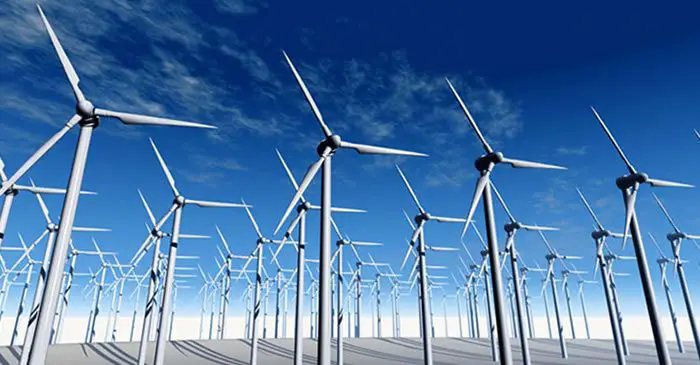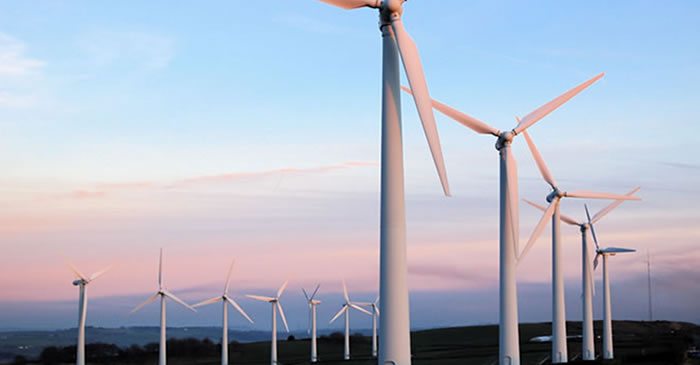In the 19th century, wind mills were designed to grind grain and pump water. Today it has become one of the fastest growing renewable sources of electricity generation since wind is widely available and in abundance in many parts of the world. As wind energy industry flourishes power generated has more than quadrupled between 2000 and 2006. Currently the global capacity is more than 70,000MW.
According to the Industry experts who speculate that if the pace of growth continues, the answer to one third of the world’s electricity needs will be found blowing in the wind by 2050.
The call for clean and renewable energy is increasing as the world urgently seeks alternatives to predetermined supplies of oil, coal and natural gas. As the cost of wind power declines, due to technology improvements and better generation techniques wind power is increasingly becoming a practical source of electricity and mechanical power.
Siting Factors for a wind farm
Wind turbines work efficiently, when the wind speeds is at 12-14 miles per hour, which runs the turbines fast enough to generate electricity. The turbines generally generate about 50 to 300 kilowatts of electricity, which can typically light ten 100watts light bulbs.
A major consideration when selecting wind power site is the proximity of the wind tower to the home or the business. In most cases the wind tower is attached to the building itself because of both noise and structural vibration considerations. However, if the tower is too far, chances are very high to incur momentous costs in running the power line from the tower to where the electric meter is or the batteries.
Ronald Gdovic, the CEO of WindStax Company based in Pittsburgh in the USA, who design and manufacture quality brands of unique plug-and-play wind power systems for residential and commercial off-grid, microgrid, and supplemental stationary power requirements, says, average annual wind density determines the amount of electricity to expect from the systems and that wind density depends on variables like heat, humidity, and elevation above sea level. Another important factor he mentioned is to determine the amount of electricity needed and for what duration.
Topography is another consideration. If the site is in a hilly area, take the advantage of the hills and gain additional height for the tower. Avoid locations on the leeward (protected) sides given that it will cut off the wind. When putting up the tower before building a residence, consider as well the collision the structure will enclose on the wind patterns. Similarly, wind turbines can be used as stand-alone applications, or combined with a photovoltaic (solar cell) system. For utility-scale sources of wind energy, large numbers of turbines are usually built close together to form a wind plant. Quite a number of electricity providers today use wind plants to supply power to their customers.
Wind turbines of any size need to be located where there is enough consistent wind for effective power production. The required tower height will be determined after a site evaluation is performed. Consulting with a local installer who is experienced with wind turbine siting and installation is also recommended by the staff at Ventera Wind Corporation based in Duluth, Minnesota in the USA. Ventera Wind manufactures a low cost durable10kW.
Altitude is also among the considerations. Wind blows faster at higher altitudes due to reduced influence of surface haul and lower air viscosity. The boost in velocity with altitude is the most spectacular aspect near the surface and is affected by topography, surface roughness, and upwind obstacles such as trees or buildings. In general, the increase of wind speeds with increasing height results to a wind profile power law, which calculates that wind speed rises proportionally to the seventh root of altitude, doubling the altitude of a turbine, hence increasing the expected wind speeds by 10% and the expected power by 34%.
Rajarshi Sen, the Director and CEO of Luminous Renewable Energy Solutions Pvt Ltd, based in India, says that, customers are advised to decide on the ratio of wind and solar power in a hybrid system, based on the annual average wind speed at the location. He also noted that wind turbine provides same energy as solar panels at 4.5 m/s average wind speed while at 5.5 m/s wind speed it provide 50 % more energy and 6.5 m/s the wind turbine provides double the energy per day as compared to solar power.
Cost of wind power
Cost is another significant factor to be put into consideration. Wind power is classified as a major contributor of global energy and it decreases dependency on unsustainable energy sources whilst reducing the cost of power. This renewable energy has been embraced by more than 90 countries and growing at an annual rate of more than 25% a year. It is apparent that wind power will remain a reliable source of power for both utilities and distributed wind initiatives for generations to come. Even in African countries electricity demand is expanding even as natural resources are becoming depleted.
Following improvements in turbine technology, wind energy has no fuel cost, allowing electricity consumers and utilities to lock in stumpy, affordable electricity rates through 20 to 30 year contracts called Power Purchase Agreements (PPAs).
Britton Rife, Sales and Customer Service from Bergey Windpower Company based in the USA, recommends a research on a product before purchasing to make sure it has a good track record. Also investigate the wind resource before investing in the wind turbine. They manufacture small horizontal axis wind turbines for homes, farms, and small businesses,
The production cost of wind energy has decreased progressively over the last few years. The main cost is the installation of wind turbines, besides they take up less space than the average power station. They only have to occupy a few square meters for the base, and allow the land around the turbine to be used for many purposes, for example agriculture. Also, when combine with solar power, it provides cheap, reliable, steady and great source of energy for the developed and developing countries.
One should seek the value, customized solution and lifetime support from the provider and not the lowest upfront cost expenditure that can be eliminated with financing structures, and systems are often paid after a short period of time says Kavita Bhatt, Head of Partner Network from UGE based in New York, in the USA. They design and manufacture the most durable and versatile vertical axis wind turbines in the world.
Nonetheless, energy budget should be establish to help define the size of turbine required, given that energy efficiency is commonly less expensive than energy production. Anemometers are small hand held and simple devices able to verify not only speed, temperature and humidity, but also the wind conditions in different parts of the location. On the other hand, before investing time and money, make inquiries on possible legal and environmental obstacles to installing a wind system. Some jurisdiction restricts the height of the structures permitted in residentially zoned areas, though it’s often possible to obtain a discrepancy. Furthermore, review the possibilities of combining the system with other energy sources, backups, and energy efficiency improvements.
Benefits of wind energy
The growth trends can be linked to the multi-dimensional benefits associated with wind energy. Many developing countries and emerging economies have significant unexploited wind energy potential with adequate wind speeds. Other advantages are that wind energy has a lower impact on the environment and climate; it also reduces dependence on fossil fuel imports and increases security of energy supply.
Wind energy is a clean and renewable form of energy. It releases no pollution into the air or water, and does not contribute to the global warming. It is free and inexhaustible source of energy. Unlike fossil fuels such as coal and oil, which exist in a fixed supply and which must be extracted from the earth at great environmental cost, wind turbines strap up a boundless supply of kinetic energy in form of wind. Additionally, it’s drought-resistant and helps avoid a multiplicity of environmental impacts due to its low impact emitting zero greenhouse gas emissions or conventional pollutants.
On the other hand it creates job opportunities for the local people. From installation of wind turbines to maintenance of the area where turbines are located, since most of the wind turbines are based in coastal and hilly areas, where people living there are habitually seen in maintenance of wind turbines. The wind industry employs about 50,500 people across construction, development, engineering, operations with tens of thousands employed in the manufacturing facilities


